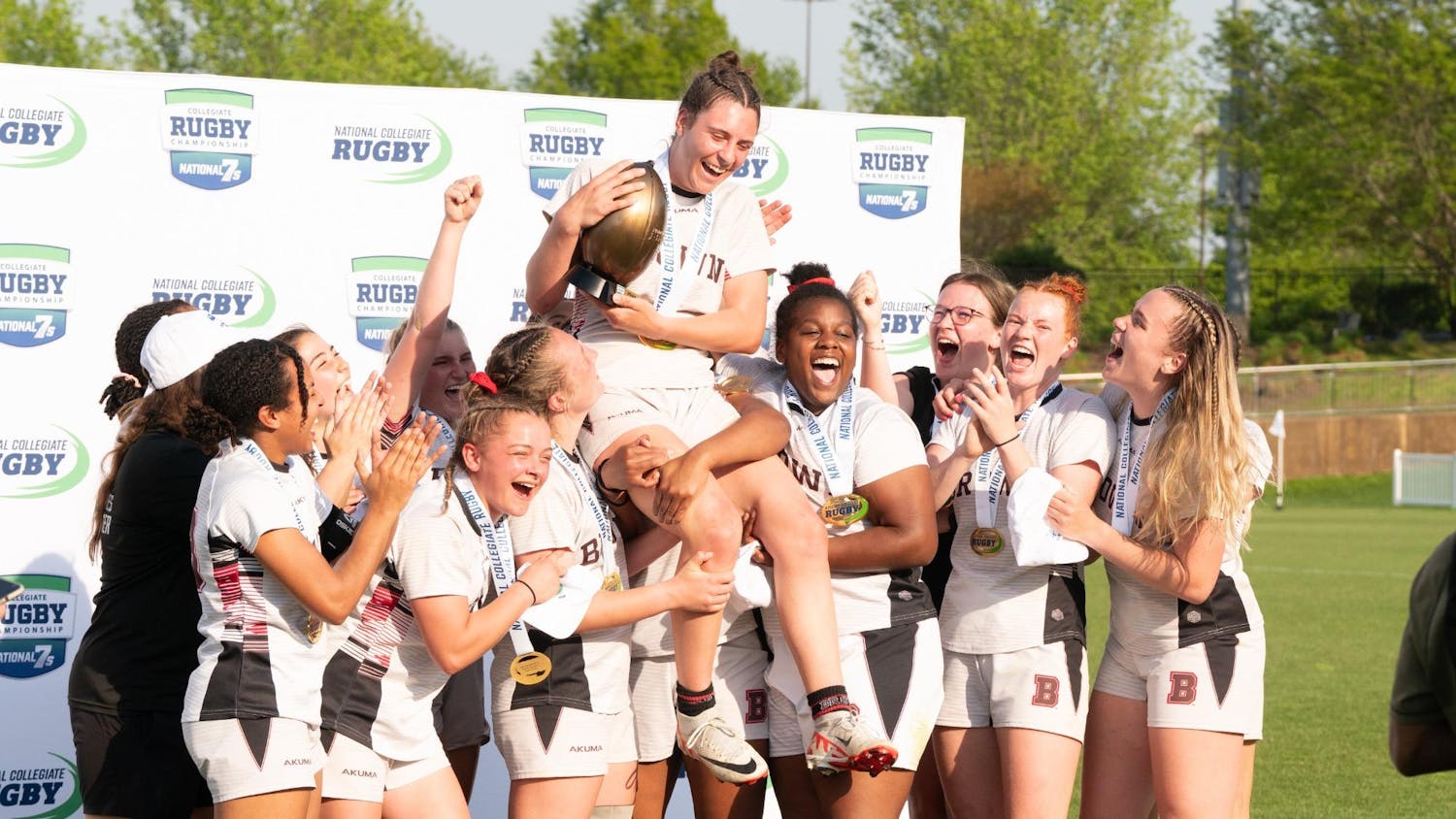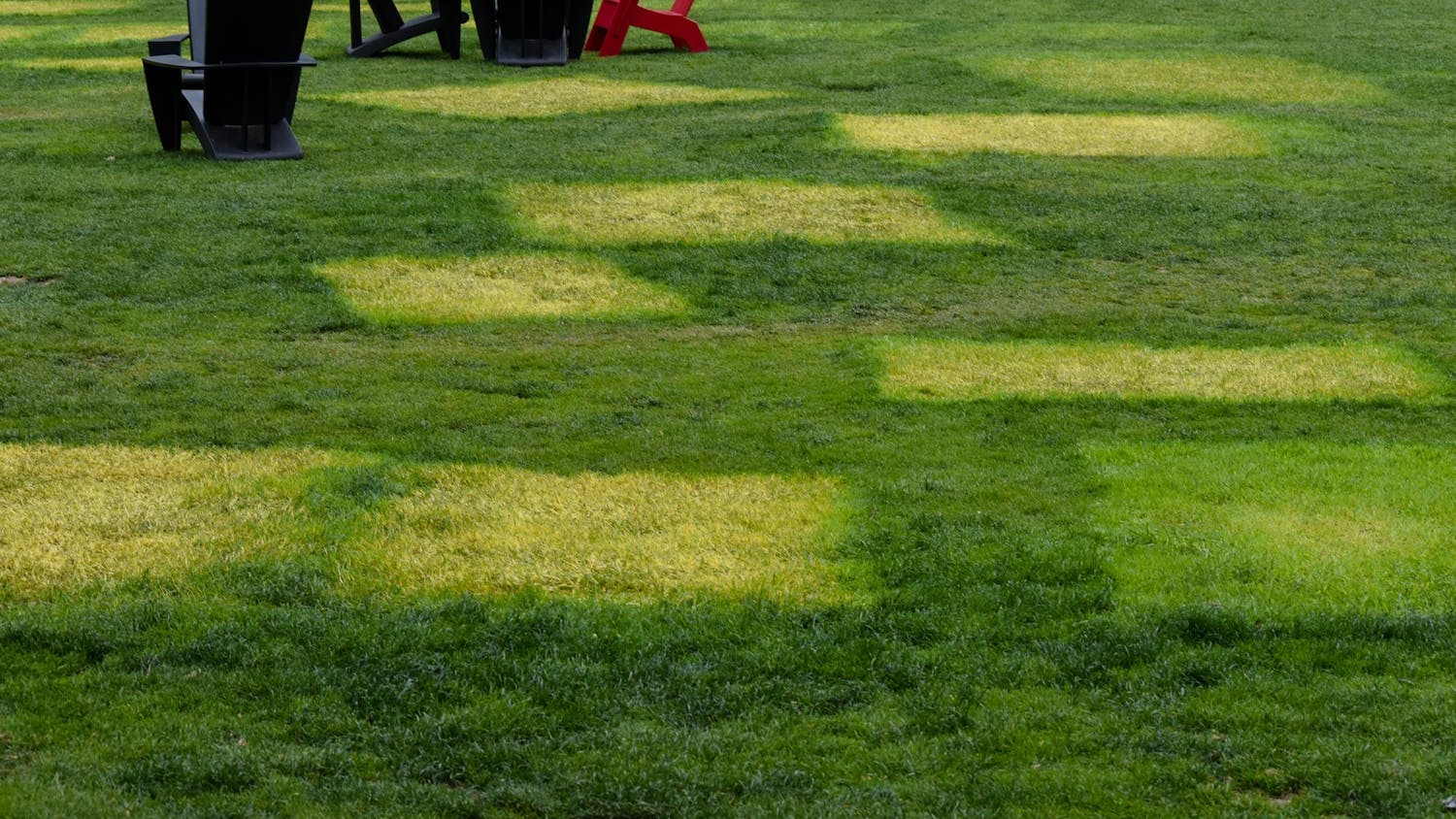A month ago, the men's lacrosse coaching staff sat down to review the financial circumstances of a high school student-athlete they had identified as a strong fit for the Brown program. Upon looking at the recruit's file, Head Coach Lars Tiffany '90 said he learned that with Brown's financial aid offer, the prospective student would owe $20,000 per year to the University. At another Ivy, the price tag would be half that. Not surprisingly, the player chose to commit to the less expensive option, and Brown lost the recruit.
Financial aid initiatives across the Ivy League have made it easier for many families to afford the cost of higher education — all eight schools have eliminated tuition for families making under $60,000 a year. For the wealthiest applicants, financial aid packages are not a factor, so all Ivy League schools recruit on an even playing field. But families with combined incomes of over $60,000 who still cannot afford a university's full sticker price have to shop around the league for the best financial aid deals. For admits whose annual family incomes fall between $100,000 and $200,000, Brown is "struggling" to compete with the big three — Harvard, Yale and Princeton — in its financial aid offers, according to Director of Athletics Michael Goldberger. As a result, Brown, in many cases, becomes the more expensive Ivy.
Performance gap
But in athletics especially, the results of financial aid discrepancies are clearly on display as schools compete in a very tangible way. Because of this gap, the parity of the league may be under threat. It is a concern that the league, coaches and players are starting to notice.
"It's something I'm going to pay attention to and try to figure out if there is an impact," said Robin Harris, the Ivy League's executive director. "But at this point, I just don't have enough information to know that. If you look at the standings of our league, they're pretty consistent over time. So we need to just wait and see what's happening."
But so far this academic year, the gap between the big three and the remainder of the Ivy League already seems to be widening. In fall sports with a league title or championship meet, Harvard, Yale and Princeton combined to win a share of five of seven titles, the only exceptions being a Penn football championship, a Penn women's soccer championship and a first place tie between Yale and Penn in women's volleyball. For winter sports, the three schools accounted for 11 of 13 titles.
Unlike other Division I schools, Brown and its Ivy peers cannot give out athletic scholarships to recruits, a restriction that Harris called a "fundamental principle" of the league. As a result, the University has always faced challenges in recruiting, including competition from in-state rivals Bryant University and the University of Rhode Island. And now, Brown is having to struggle more and more to recruit middle-class athletes within the Ivy League on account of its smaller financial aid awards.
Harvard, Yale and Princeton, whose endowments are far greater than those of the other five Ivy institutions, can better recruit because of their ability to offer superior financial aid packages. Brown's $2.2 billion endowment is the smallest in the Ivy League. Harvard, Yale and Princeton have endowments of $27.4 billion, $16.7 billion and $14.4 billion, respectively. The schools are the top three in the country for per-student endowments.
Giving competitive financial aid packages is a "real problem area for us," Goldberger said. "It's something that I've felt could really threaten the well-being of the league — the differences between those three institutions and the other five, in terms of their ability to recruit students."
Tiffany said he has seen the impact of the financial aid discrepancy on the recruiting circuit. "There's no question that we do encounter prospects that we are very interested in, that are interested in Brown," he said. "But if they're in a certain financial aid range and other Ivies are involved, often times, unfortunately, we become the more expensive option."
Tiffany said when he took the job in 2006, other Ivy League lacrosse coaches told him that cases in which financial aid considerations prevented a player from attending a school were rare and only occurred once or twice in a recruiting class. But he said his experiences in the recruiting cycles the last two years have indicated otherwise.
In roughly 40 percent of cases, financial aid ends up being an important factor in the college the recruits ultimately select, he estimated.
Student-athletes who have gone through the recruiting and application process have taken notice of the issue as well. One Brown athlete, who agreed to speak to The Herald under the condition of anonymity, said he did not know any fellow athletes for whom a considerable financial aid discrepancy within the Ivy League affected their college choice because such a matter is often a private one.
But the player admitted that he has sensed from coaches and players that the developing discrepancies have left Brown with an "uphill battle."
"Because there are no athletic scholarships, financial aid is a big issue in Ivy League sports in general," he wrote in an email to The Herald. "If a middle class kid can go to Harvard for $15,000 per year or Brown for $50,000 per year, it's not really a tough decision to make — they're going to Harvard."
Tiffany explained that to combat this issue and produce successful programs, coaches at Brown must work harder in the offseason.
"We have to have a wider net," he said. "We have to recruit more. We have to be on the road more."
"If we can find families who are below the $75,000 range or above the $200,000 range, financial aid is not going to be a big issue," Tiffany added. "Now it's just really comparing us to other schools based on education, the atmosphere — all the intangibles that go into picking a school and not having the price tag be a factor."
Match game
Tiffany also said the issue has affected the timeline for recruiting. Each year starting July 1, coaches provide the Office of Financial Aid with a list of the students they are interested in recruiting. The office then sends information to these students about the aid process at Brown and includes a link where students can fill out relevant financial information.
This data can then be used to give potential recruits a preliminary sense of the award they would receive at Brown "if everything stays the same when they apply," said Jim Tilton, director of financial aid.
Although the office received about 750 requests for a "pre-read" last year, Tilton explained that only 390 award notifications were sent out since not every student submitted the necessary information. This "pre-read process" also takes place at other Ivy League institutions.
In cases where a student gets early packages from two or more different schools, the financial aid office will look at the other offers and reconsider their own. "We ask families to get a copy of the award from another school, and we would make adjustments based on the new information," Tilton said, adding that the University can match other schools in many cases.
Goldberger said athletes are not more likely than non-athletes to have success with financial aid appeals, though coaches can act as advocates within the school. Tilton also said coaches do not actually speak to the aid office about individual players and added that many other students have their own advocates such as high school guidance counselors or parents who understand the application process.
Even for students without guidance, Tilton said the office attempts to make them aware of the opportunity to have files re-read and encourages them to do so if they feel it is necessary by providing comprehensive instructions on their website. >
"From our perspective, that's all fine," Harris said of the financial aid award matching. "It just can't be done only for athletes. That matching has to occur for students who are not athletes as well."
In accordance with that Ivy rule, Tilton stressed that the opportunity for this sort of appeal is not limited to just athletes and that files are reviewed in the same way for all students. "There's a sense that we do things for athletes that we don't do for others," he said. "And that's just not the case."
But Goldberger said he is concerned that some coaches at other Ivy League schools are breaking Ivy League principles. He said he is worried they demand that potential recruits promise not to court other Ivy League schools that could offer better financial aid packages to middle-class students.
"It becomes very competitive in very bad ways," Goldberger said. "That's something the Ivy League is very concerned about — the notion being that you really want kids to make choices that are best for them."
But for all Ivy League schools, the admissions processes for student-athletes are getting earlier. The Office of Admission has an early-review process for potential recruits, in which it evaluates the credentials of these students beginning in the late summer or early fall and then mails out likely letters to the most qualified applicants as early as Oct. 1. Likely letters, as their name indicates, are not official acceptances but tell the student they will probably be admitted once actual decisions are sent out.
These likely letters, which have been in place for about 20 years, according to Dean of Admission Jim Miller '73, are used primarily for athletes who need to make decisions about their college plans earlier than other students due to the earlier athletic recruitment calendar. "It's rare to find a non-athlete who needs to make a commitment before the early-decision round," Miller said.
But Miller noted there are exceptional circumstances where people do need a decision earlier on in the admission cycle, such as for major scholarships. "We need to treat everybody the same, whether they're a recruited athlete or not," he said.
Coaches, players and administrators all said that financial aid treatment is the same for all students. The effects of financial aid discrepancies are not limited to the athletic fields.
"Everyone on campus is experiencing this significant obstacle," Tiffany said. "Whether it's the engineering department, the music department or other programs at Brown, we're all at a disadvantage despite the fact that Brown has made some wonderful advances in the amount of financial aid provided for its students."
But in athletics, the growing imbalance can be measured in wins and losses.
— With additional reporting by Dan Alexander




